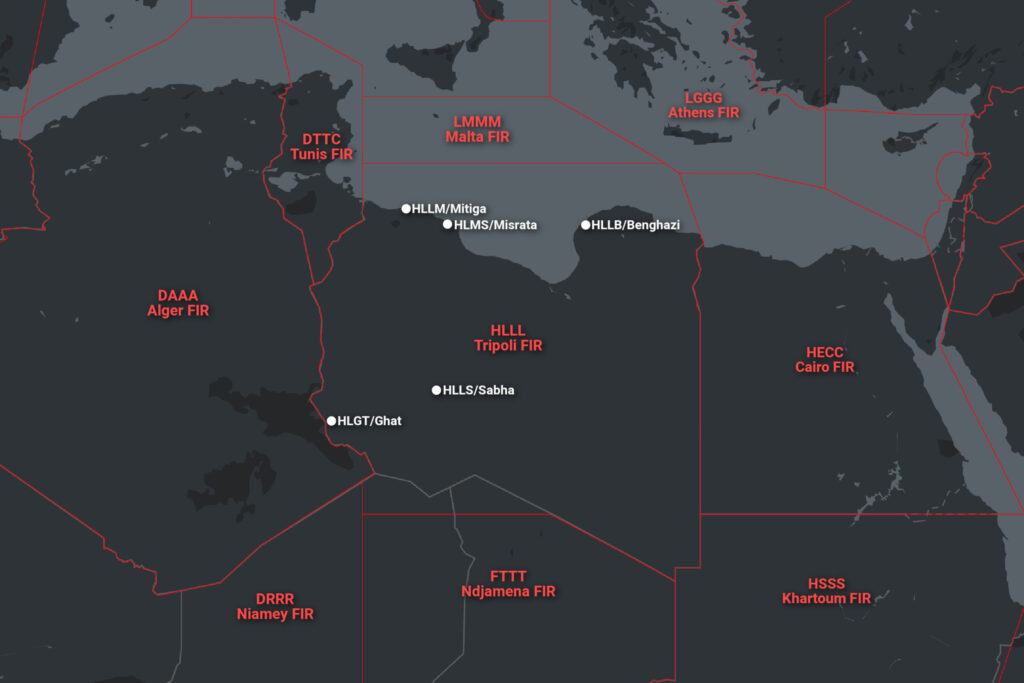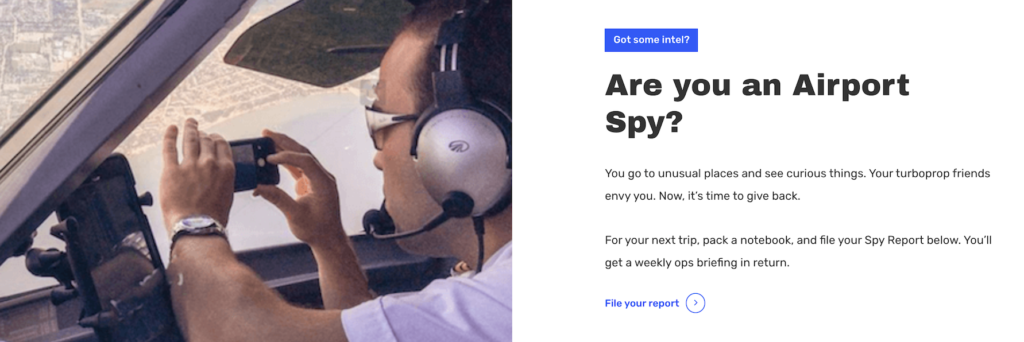We haven’t mentioned Libya in a while. Our last in-depth look was back in 2019, which is several years and a whole lot of Covid ago. So, what is the current situation and does it look likely that the country will be safe to overfly anytime soon?
Any alerts to know about?
In the first half of 2021, the Libya situation did change somewhat, with signs that security and stability in the country might be improving.
In June 2021, a ‘fragile’ ceasefire appeared to be holding, despite increased military activity on the western border with Algeria. The ceasefire came after a UN led agreement was put in place and was implemented in April 2021.
Egypt and Libya saw a resumption of passenger flights, along with Malta from April 2021. However, there are very limited international operations, the majority being domestic within the country.
What’s been happening recently?
The security situation has reportedly deteriorated through the start of 2022, with intermittent fighting and armed clashes occurring regularly between rival militia groups. These groups are backed by competing geopolitical parties and the overall situation is very volatile and complicated.
In fact, the UN led elections at the start of 2022 and a new Prime Minister was brought in with the hope of unifying the country, but sadly this does not, so far, seem to have resolved what is described as an “intensifying political crisis”.
The fighting has led to significant damage to infrastructure, particularly to power supplies across the country, and to road systems. Disruption and security concerns on the ground are common. Civil unrest including protests and strikes occur relatively frequently.
Islamic State militants do conduct operations in the country, although these are primarily restricted to the southern regions. Attacks on high profile locations, including international airports, remain likely.
The FAA Prohibition.
The US extended their airspace warning in 2021, updating their SFAR 112 to run until least March 2023.
You can read all about it in depth here, but the general summary is don’t overfly HLLL/Tripoli FIR except for altitudes at or above FL300 “outside of Libyan territorial airspace” (the international bit over the southern Mediterranean sea).
Check out Safeairspace for other state warnings and prohibitions as we update this regularly.

Airport Options.
HLLT/Tripoli airport remains closed following significant damage to many of the airport facilities.
HLLM/Mitiga is the main international airport. A major attack in May 2020 resulted in damage to parked aircraft, terminal and runway. Jet fuel tanks were also set on fire. The airport was also closed in January 2020 due to a rocket attack. Prior to this, airstrikes in the area made it critically high risk and dangerous.
HLMS/Misrata and HLLB/Benghazi are also operational for international flights.
HLMS/Misrata has a single runway 11,155’ with VOR DME approach only.
HLLB/Benghazi is a much better equipped airport offering minor airframe and engine maintenance facilities, two 11,811’ (3600m) runways with an ILS to 33L, and VOR DME or LCTR approaches to the other runways. However, Al-Qaeda linked militants are reportedly active in this general area.
HLLS/Sabha also has an 11,811’ runway with ILS to 13 and VOR DME to 31.
HLGT/Ghat has an 11,811’ runway but no precision approach and is relatively lacking in maintenance and support facilities.
The Airspace.
Entering the airspace without prior contact may result in aircraft being “engaged by air defense systems”. This message was passed to Malta ATC in April 2020.
Militia stated in 2020 that certain areas around major cities were no-fly zones, and there was a very real risk they could attempt to shoot down any aircraft which attempted to fly to HLLM/Mitiga airport in particular.
The northern airspace borders the Mediterranean sea and Maltese airspace, and caution should be taken if routing over this region to not accidentally detour into Libyan airspace.
Aircraft operating east/west particularly from Tunisia, Algeria and Morocco, or Egypt and further east, can fly through Maltese airspace and this does not pose a significant detour to avoid Libyan airspace. Suitable alternate airports are available along these routes.
What Libya says.
We occasionally get contacted by Libyan ATC to update us on the situation from their perspective, because often what is said (and assessed) via media reports does not match what those in a country experience.
Their most recent feedback (early 2022) was this:
- International airlines are operating into HLLM/Mitiga and HLMS/Misrata without (apparent) incident
- There are passenger flights from Tunisia operating 3 times a week, and several cargo flights per week
- Overflying east/west is considered safe, north/safe requires some more information for a full assessment
- VHF ATC services over international waters are reliable
What Malta says (because they’re right next door).
- The situation has improved over the last few months but there is not much transparency as to the real state of affairs in terms of ATM/CNS provision in the HLLL/FIR.
- Libyan airspace is entirely procedural and there must be huge swathes of airspace where the service provision is either limited or unreliable especially in the domain of air-ground communications. We do not know the status of the international / national aerodromes in Libya as their AIP does not seem to be updated regularly (understating it here).
- We are also aware of military activity over the high-seas which is either operating as OAT or not in control with Tripoli ACC / Benghazi ACC including RPAs. We are not aware how RPAs are being integrated in the airspace, if at all. GPS jamming could also be an issue.
- The issue of 5A-registered aircraft which are banned from EU airspace has not been resolved and we still have a lot of restrictions from EU States including Malta banning all flights departing from HL aerodromes from entering EU national airspace due to security issues.
- So whilst the military / conflict situation might have improved on the ground there is not much evidence to support the claim that all is safe and sound.
This was sent in December 2021, prior to the UN-led elections. The continued instability following these elections is what led us to pop this update out now.
Our risk assessment.
Libya remains volatile. Safety and security on the ground is not good, and there is a significant risk to aircraft overflying due to the conflict and weapons available to militia groups. Despite feedback from local ATC, and reports that some operators do overfly the country, we continue to advise against it.
It remains a Level 1: Do Not Fly region on Safeairspace.
Have you operated in or over?
Share your feedback with us at news@ops.group, or file a report of a recent trip on our Airport Spy page.
More on the topic:
- More: Libya Airspace Risk: An Idiot’s Guide
- More: Mass evacuation of aircraft – Libya
- More: Libya Airspace Update Aug 2023
- More: SafeAirspace: 2021 Update
- More: Libya Airspace Update Oct 2019
More reading:
- Latest: More face scans at the US border: BizAv now included
- Latest: Mexico Customs Surprises: Pills, Vapes, and Laptop Rules
- Latest: Greenland NAT Alternates: Dec 2025 Update
- Safe Airspace: Risk Database
- Weekly Ops Bulletin: Subscribe
- Membership plans: Why join OPSGROUP?












 Get the famous weekly
Get the famous weekly 





